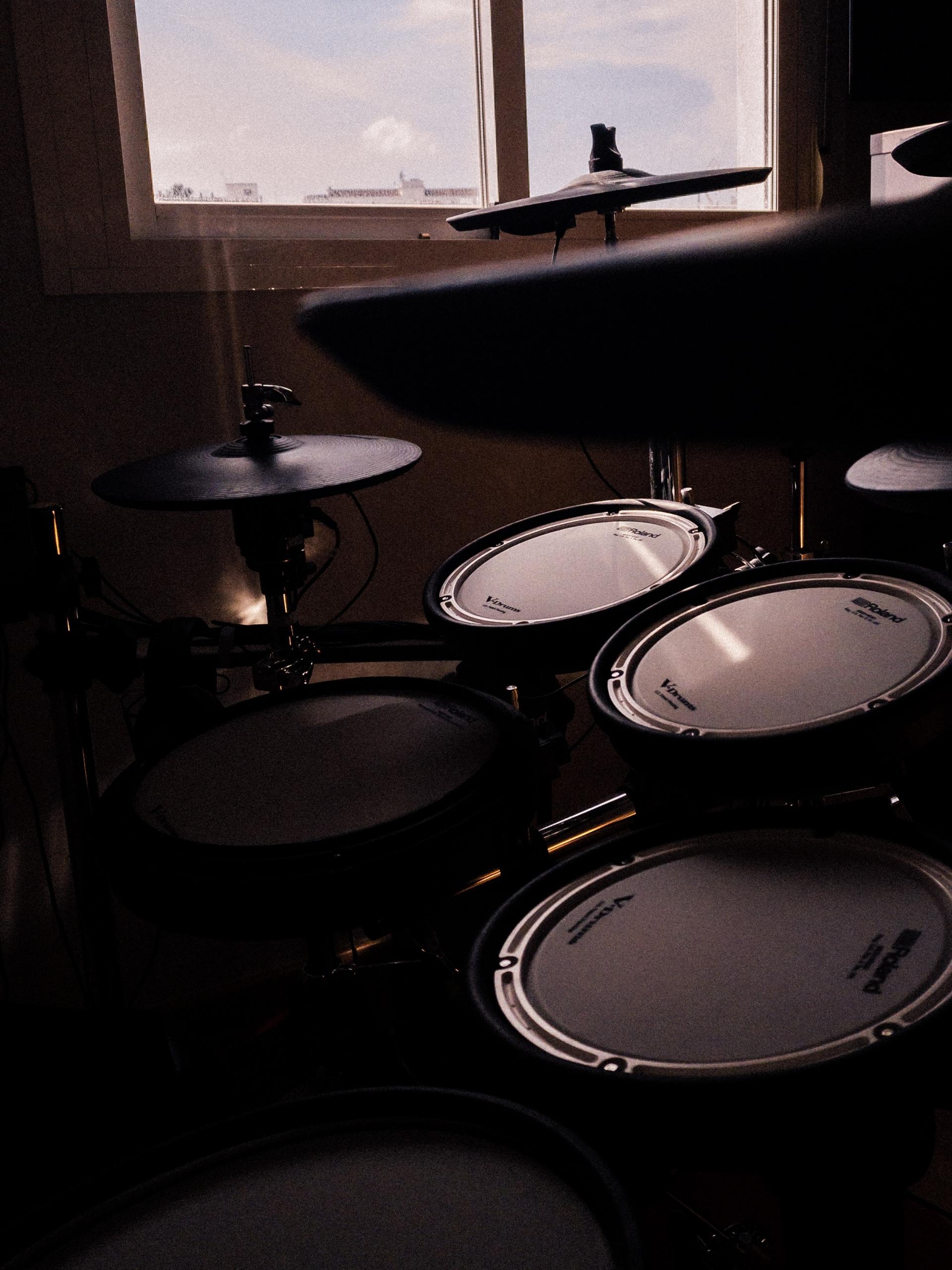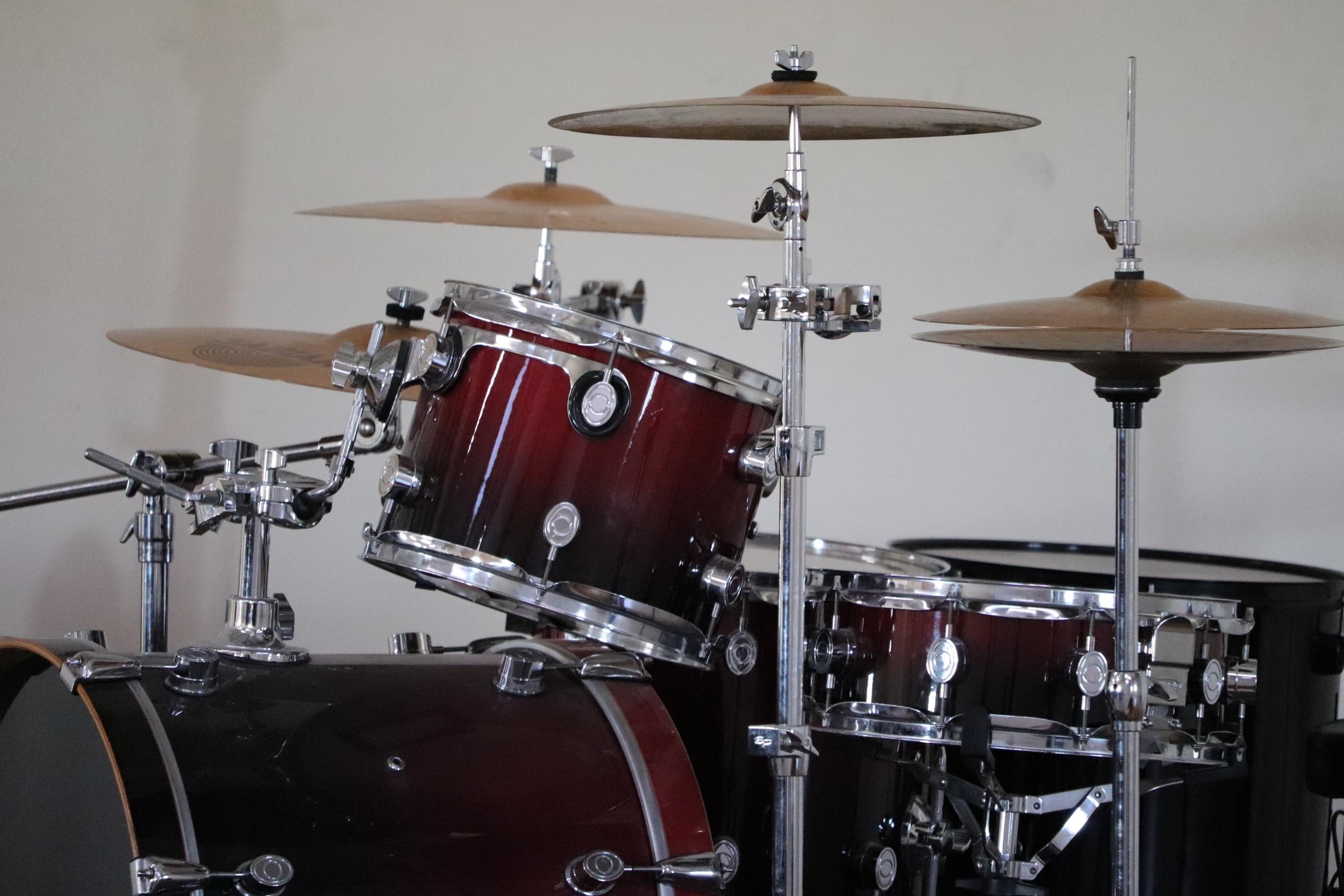Did you know that 15,000 percussion instruments exist?
Drums come in all shapes, sizes, and materials and come from all around the world! That's why they are used in numerous music styles and used for various settings, music, religious rituals, meditation, dance and more.
Before you start purchasing, we will review important elements about a drum kit, this will help you decide and differentiate the different kits, their materials and therefore their prices.

Your size and level matter
A drum kit will not be the same for a child, a teen, or an adult. If you are looking to buy for a younger kid, you will need to consider a junior drum set to get them started and change it as they grow.
The size matters because it is key for you to play comfortably, imagine playing with something that is too small for your legs to fit or too big to reach with your arms. In order to learn and improve, you must have a drum set that fits your size.
The level you play at is essential as well, this is mostly related to the preferences that you might have as your level increases. The more advanced is your level, the more likely you are to search specific materials to produce a better sound quality that will allow you to improve your level and performance.
Another important aspect that you should not forget is that the setting of your drum kit will vary if you are right or left-handed.
If you are a total beginner, you can also consider practising on a drum pad. This is because they are very similar in action, they are more quiet and compact, which makes it easy to transport for practice.
While the disadvantage is that you won't build as much speed and accuracy and depending on the model you might not be able to practice rimshots. You will, however, start building your coordination and dexterity, the drum pad helps you to exercise your wrist and muscles.
Another advantage is the price, far more affordable than a basic drum set. You can get started with €20 and find other prices around €25 depending on the material.
Basic drum kit
How many pieces does a drum kit have? A drum kit or trap set is a collection of drums, cymbals, and other percussion instruments. Often times played with drumsticks held in both hands, while the feet operate with pedals that control the hi-hat cymbal or the beater for the bass drum.
A standard or basic modern drum kit will include:
- A snare drum, mounted on a stand, placed between the player's knees and played with drum sticks (which may include rutes or brushes)
- A bass drum, played by a pedal-operated by the right foot, which moves a felt-covered beater
- Two or more toms played with sticks or brushes.
- A hi-hat (two cymbals mounted on a stand), played with the sticks, opened and closed with the left foot pedal (it can also produce sound with the foot alone)
- One or more cymbals, mounted on stands, played with the sticks
This would be the traditional kit, but you can always keep on adding drums to your kit and collection. Everything will depend on what music you want to play.
Price-wise, everything will vary, but this is to give you an overview of the prices:
- Drum set for kids: €99
- Drum kit for adults and beginners with 5 pieces€211
- Drum kit for adults studio version: €777
What type of drum and music do you want to play?
As we mentioned earlier, numerous drums exist to play different kinds of music, have you figured out which one you want to play yet?
For example, jazz, folk music and acoustic drummers often play smaller drums and don't use a full kit. While rock bands, metal groups, or even classical music might need more than the basic set to play.
To be able to choose easily, you should know that drums come in two broad configurations:
- Fusion drums: tend to be a bit smaller in diameter, but with a zippy tone and more voluble sound.
- Standard drums: are probably better known, among other things, for the bigger tone the toms produce and the greater volume overall.
Regardless of which one you will choose, remember that drums like any instrument require regular maintenance. Find out everything you need to know to keep them in good condition.


Shells, and heads
The material of your drum will impact their sound. The wood used for the shells and the type of head you select will radically change how your drum sounds or even how it has to be played.
Here are the various woods used to make drum shells and how they impact the sound:
-
Birch – a dense wood that makes for a hard, bright sound
-
Oak yields a similar sound to maple
-
Basswood is an inexpensive alternative to maple and birch; the advantage being that it takes lacquer exceedingly well.
-
Poplar is another low-cost alternative to maple and birch, yet makes a similar sound
-
Lauan, generally referred to as ‘select hardwood’, might be considered budget-birch.
To understand a bit more about their quality differences and how this affects the price, you can read more here.
And what about the heads? This membrane or skin of a drum can be made in different materials and thicknesses, thus impacting and changing the price. Nowadays, they are mostly made of plastic, such as polyester or Mylar. Plus, there are 2 kinds of head-on each drum. The side that you hit is the batter head, while the bottom skin is a resonant head.
Here are some important differences that affect the sound:
- Single-ply: designed for jazz and light swing or rock music. It is also the most commonly used drumhead.
- Double-ply: great for metal, fusion, and R&B
- Dotted heads: they give a more focused and drier sound
- Coated heads: they can have a white or black coating that gives a subtle muffling effect.
- Bass drum head: they can include an internal dampening system on the batter to provide a controlled sound and a porthole for improved tone and to make it easy to fit a mic.
Here again, it will depend on which type of music you want to play, prices can start at €11 and go up to €28 on average.
More drum kit accessories
Other elementary accessories to complete your set are a few cymbals, like the hi-hats, ride and crash cymbals. Other cymbals, such as splash cymbal and china cymbal, create a good effect of music but are not necessary. Unfortunately, cymbals might be the most expensive component of your drum kit.
The cheaper cymbal set price would be around €129, while the most expensive can go up to €1,179 if you want to buy a high-end quality, new and brand product.
The drum sticks on the other hand are essential accessories to play your drums. Thankfully, there are many options in the market, you can even find them for €2!
The world of drum kits accessories is still wide and there are many to discover once you are committed to this instrument.
Electronic options
If you are looking for something more compact and easy to transport and maintain, you might consider an electronic drum set. As the world of electronics is growing, the prices are lowering each time. The great advantage of the electronic drum set is the reduction of noise, you can play and put your headphones on, and no one will notice you are playing.
A beginners' electronic drum set can cost around €199. They can also be very expensive if you are looking for a specific brand or model they will cost around €825.

Where to buy it?
If so far you already know what music you want to play, or if you are looking for a specific brand or drum kit type, it will be easier for you to start looking at your first drum set.
There are several options out there, the most recurring being:
- Online: here you can look and compare different prices or search for specific drums and cymbals.
- Second-hand: this option might be interesting if you have a tight budget, but be careful that the drum kit you buy is still in good condition and tuned, otherwise you might have to buy everything new again.
- Music and instrument store: this option is the best if you want to touch and try out the drums and accessories you are considering buying.















